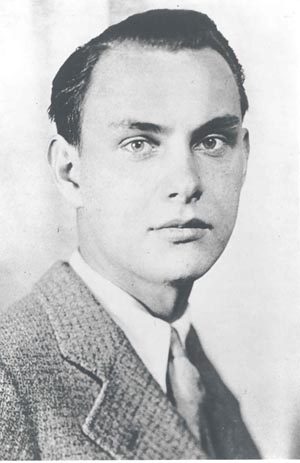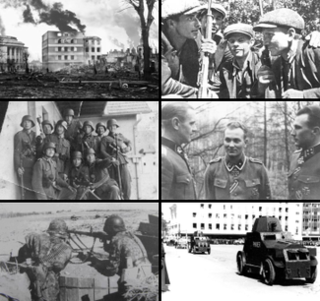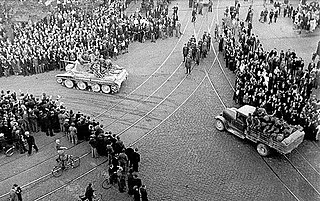
Tallinn Airport or Lennart Meri Tallinn Airport is the largest airport in Estonia, which serves as the secondary hub for AirBaltic and the cargo airline Airest. It was also the home base of the now defunct national airline Estonian Air. Tallinn Airport is open to both domestic and international flights. It is located 2.7 nautical miles southeast of the centre of Tallinn on the eastern shore of Lake Ülemiste. It was formerly known as Ülemiste Airport.

The history of Estonia forms a part of the history of Europe. Humans settled in the region of Estonia near the end of the last glacial era, beginning from around 9000 BC. Before German crusaders invaded in the early 13th century, proto-Estonians of ancient Estonia worshipped spirits of nature. Starting with the Northern Crusades in the Middle Ages, Estonia became a battleground for centuries where Denmark, Germany, Russia, Sweden and Poland fought their many wars over controlling the important geographical position of the country as a gateway between East and West.
Airlines Aero was a regional airline based in Tallinn, Estonia. It operated services between three Finnish destinations, as well as international flights to Tallinn. All of their flights were operated under Finnair's designation AY. Its main bases were Helsinki-Vantaa and Tallinn-Lennart Meri. Aero ceased its operations in January 2008.

Harju County, is one of the fifteen counties of Estonia. It is situated in Northern Estonia, on the southern coast of the Gulf of Finland, and borders Lääne-Viru County to the east, Järva County to the southeast, Rapla County to the south, and Lääne County to the southwest. The capital and largest city of Estonia, Tallinn, is situated in Harju County. Harju County is the largest county in Estonia in terms of population, as almost half (45%) of the Estonia's population lives in Harju County.

Konstantin Päts was an Estonian statesman and the country's president in 1938–1940. Päts was one of the most influential politicians of the independent democratic Republic of Estonia, and during the two decades prior to World War II he also served five times as the country's prime minister. After the 16–17 June 1940 Soviet invasion and occupation of Estonia, President Päts remained formally in office for over a month, until he was forced to resign, imprisoned by the new Stalinist regime, and deported to the USSR, where he died in 1956.

Rein Lang is an Estonian politician, a member of the Estonian Reform Party since 1995, and a diplomat. He was the Minister of Culture in Andrus Ansip's third cabinet until his resignation.

The Baltic Fleet is the fleet of the Russian Navy in the Baltic Sea.

Naissaar is an island in Estonia. It is located in the Gulf of Finland, northwest of the capital city Tallinn, and is administratively part of Viimsi Parish. The island has an area of 18.6 square kilometres. It is 8 kilometres long and 3.5 kilometres wide, and lies about 8.5 kilometres from the mainland. The highest point on the island is Kunilamägi, which is 27 metres above sea level. The island consists predominantly of coniferous forest and piles of stones and boulders. In 2020, the island had a population of 17; in 2011 the island had about 35 permanent residents and some summer residents. Administratively the island is divided into three villages: Lõunaküla (Storbyn), Tagaküla (Bakbyn), and Väikeheinamaa (Lillängin).

Iku-Turso was a 500-tonne Vetehinen-class submarine that served in the Finnish Navy during the Second World War. It was launched in May 1931 and was named after a mythological Finnish sea monster, Iku-Turso. It was built by the Crichton-Vulcan shipyard in Turku according to a project developed by NV Ingenieurskantoor voor Scheepsbouw, "IvS", and was scrapped in 1953.

Estonia–Russia relations are the bilateral foreign relations between Estonia and Russia. Diplomatic relations between the two countries were established on 2 February 1920 after the Estonian War of Independence ended in Estonian victory with Russia recognizing Estonia's sovereignty and renounced any and all territorial claims on Estonia.

During World War II, the Estonian capital Tallinn suffered from many instances of aerial bombing by the Soviet air force and the German Luftwaffe. The first bombings by Luftwaffe occurred during the Summer War of 1941 as part of Operation Barbarossa. A number of Soviet bombing missions to then German-occupied Tallinn followed in 1942–1944.

Henry William Antheil Jr. was an American diplomat killed in the shootdown of the Aero Flight 1631 by Soviet aircraft in the wake of the Soviet occupation of the Baltic States.

Estonia declared neutrality at the outbreak of World War II (1939–1945), but the country was repeatedly contested, invaded and occupied, first by the Soviet Union in 1940, then by Nazi Germany in 1941, and ultimately reinvaded and reoccupied in 1944 by the Soviet Union.

The Shchuka-class submarines, also referred to as Sh or Shch-class submarines, were a medium-sized class of Soviet submarines, built in large numbers and used during World War II. "Shchuka" is Russian for pike. Of this class, only two submarines entered service after 1945, although they were launched before the war.

The Soviet evacuation of Tallinn, also called Juminda mine battle, Tallinn disaster or Russian Dunkirk, was a Soviet operation to evacuate the 190 ships of the Baltic Fleet, units of the Red Army, and pro-Soviet civilians from the fleet's encircled main base of Tallinn in Soviet-occupied Estonia during August 1941. Near Juminda peninsula Soviet fleet ran into minefield that had been laid by the Finnish and German navies, and were repeatedly attacked by aircraft and torpedo boats, suffering massive losses.

Estonia–India relations refers to the bilateral diplomatic relations between Estonia and India. India first recognised Estonia on 22 September 1921 when the former had just acquired membership in the League of Nations. India re-recognised Estonia on 9 September 1991 and diplomatic relations were established on 2 December of the same year in Helsinki. Estonia is represented in India by its embassy in New Delhi and its honorary consulate in Mumbai. India is represented in Estonia through its embassy in Helsinki (Finland) and through an honorary consulate in Tallinn.
The timeline of the occupation of the Baltic states lists key events in the military occupation of the three countries – Estonia, Latvia and Lithuania – by the Soviet Union and by Nazi Germany during World War II.

The Soviet occupation of the Baltic states covers the period from the Soviet–Baltic mutual assistance pacts in 1939, to their invasion and annexation in 1940, to the mass deportations of 1941.

















